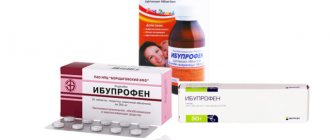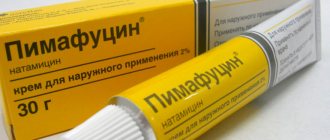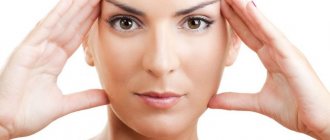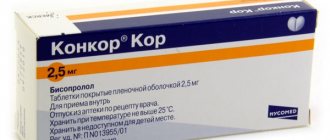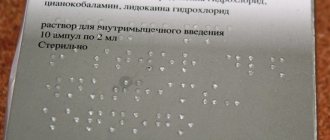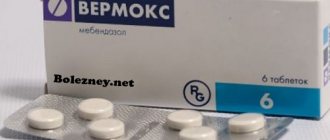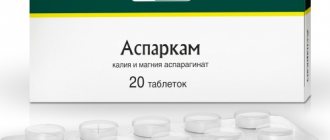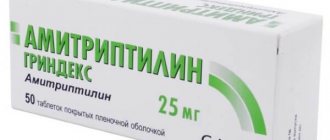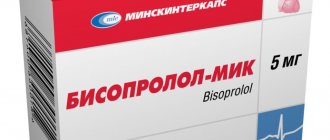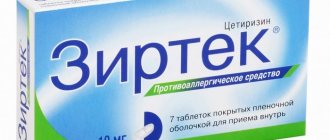Description
It is a non-steroidal anti-inflammatory drug and is widely used to relieve pain syndromes of various origins, however, there are a number of contraindications, and in case of some diseases, it is necessary to give your child medications for toothache with extreme caution.
The tablets are white or light yellow, odorless. The surface is smooth, biconvex.
Each pack contains blisters of 10 tablets. The package may contain one, two or ten blisters. Cardboard packaging.
Release form and composition
Nise is available in the following forms:
- Dispersible tablets: in the shape of the letter “D”, beveled edges, “NK” embossed on one side, the other side is smooth, light yellow color (10 pieces in blisters, 1, 2 or 10 blisters in a cardboard pack);
- Suspension for oral administration: yellow, with a characteristic taste and pleasant odor, redisperses when shaken (60 ml in dark glass bottles, 1 bottle in a cardboard box complete with a dosage cap);
- Gel for external use 1%: transparent, yellow or light yellow, without foreign particles (20 g and 50 g in laminated aluminum tubes, 1 tube in a cardboard box).
Instructions for using Nise tablets for toothache
Nise for the child in the lowest possible dosages, in the shortest possible courses, in order to reduce the risk of unwanted side effects. The duration of the course is 14 days, but you should not drink it daily for two weeks for toothache.
If simultaneous administration with acetylsalicylic acid in cardiac doses is prescribed, it is necessary to take gastroprotective drugs at the same time.
In tablet form, it is prescribed only to children over 12 years of age (children younger only in the form of a suspension). Children are given 100 mg twice a day, adolescents weighing less than 40 kg are given at the rate of 1-5 mg per 1 kg of weight. The maximum daily dose for children over 12 years of age is 200 mg. Drink with plenty of water.
In case of chronic renal failure, it is necessary to reduce the maximum daily dose, which is carried out individually by the attending physician (no more than 100 mg per day). If there are diseases of the gastrointestinal tract, the medicine should be taken at the end of meals.
Overdose
Symptoms of drug overdose
: apathy, nausea, drowsiness, vomiting.
As a rule, they are reversible with the necessary assistance.
In addition, the development of: gastric bleeding, arterial hypertension, respiratory depression, acute renal failure is possible
Treatment: timely gastric lavage, oral administration of activated carbon and symptomatic therapy. Hemodialysis or forced diuresis are ineffective.
Intoxication with Nise occurs in extremely rare cases. The reasons may be either the use of too high dosages or a long continuous course of treatment with the drug, especially in the presence of various concomitant pathologies. The most common symptoms of poisoning are:
- increased blood pressure;
- drowsiness;
- difficulty breathing;
- bleeding of the gastrointestinal tract;
- nausea and vomiting;
- acute renal failure;
- general feeling of weakness and apathy.
How it works
Being a non-steroidal anti-inflammatory drug from the sulfonamide class, it provides pronounced analgesia, reduces temperature and, of course, effectively relieves inflammation. It differs from other drugs of this pharmaceutical group in that it inhibits cyclogenase-2, inhibits the synthesis of prostaglandins, and also acts less strongly in relation to the inhibition of cyclogenase-1 and provokes fewer side effects in comparison with these drugs.
The active substance is well absorbed from the gastrointestinal tract. Metabolized in the liver. It is excreted primarily in urine and also in feces. The pharmacokinetic profile of the active substance in elderly people does not change when using single or multiple doses.
Being a non-steroidal anti-inflammatory drug, Nise requires careful use.
Used for symptomatic therapy, it is a second-line drug. When taken by pregnant women, the risk of spontaneous abortion and cardiovascular pathologies of the fetus increases.
Possible closure of the ductus arteriosus, impaired renal function, fetal hypertension and, as a consequence, the development of renal failure in the fetus.
The risk of bleeding, deterioration in the contractility of the uterus, and the appearance of peripheral edema in the mother increases. Strictly contraindicated during pregnancy.
The active substance suppresses the release of histamine, reducing the degree of bronchospasm provoked by the action of histamine. By inhibiting the synthesis of collagenase and suppressing the synthesis of urokinase, the destruction of cartilage tissue is prevented.
It can affect psychomotor reactions and concentration due to - it provokes dizziness and drowsiness, therefore it cannot be used in cases where increased concentration is required. When taken simultaneously with glucocorticoids, the risk of gastric bleeding and ulcers increases.
Antiplatelet agents also increase the risk of bleeding together with nimesulide. The effect of anticoagulants is enhanced, therefore, in case of serious coagulation disorders, nimesulide is contraindicated.
In cases where combination therapy is necessary, control of blood clotting is also necessary.
Nimesulide reduces the effectiveness of diuretics. With simultaneous use of furosemide, the excretion of sodium and potassium is reduced, and the risk of progression of heart and renal failure increases.
In the second case, it is necessary to consume a sufficient amount of fluid, as well as monitor kidney function while taking angiotensin-converting enzyme inhibitors and drugs that suppress cyclooxygenase.
In cases where combination therapy is necessary, control of blood clotting is also necessary. Due to the antiprostaglandin action of non-steroidal anti-inflammatory drugs, the effectiveness of mifepristone is likely to decrease.
When taking lithium preparations, it is necessary to monitor its concentration in plasma while taking the drug, because it reduces the clearance of lithium, leading to an increase in its concentration in plasma.
If prescribed less than 24 hours before or after methotrexate, it must be taken into account that the toxicity of this drug may increase against the background of nimesulide. The renal toxicity of cyclosporines may be increased due to the effect on renal prostaglandins.
Pharmacological properties of the drug
The drug Nise is a non-steroidal anti-inflammatory drug, under the influence of which the synthesis of prostaglandins, mediators of inflammatory processes and edema in the body, is suppressed. When taking the tablet orally, an analgesic, antipyretic and decongestant effect on the body is observed.
The drug inhibits the process of platelets gluing to each other, slightly thins the thick blood, which serves to prevent the development of thrombosis.
When taking the medicine orally, pain in the joints disappears, stiffness of movement and swelling at the site of inflammation decreases.
Indications
In addition to toothache, the indications are as follows:
- rheumatoid, psoriatic arthritis;
- inflammation of ligaments and tendons, dislocations and sprains of the capsular-ligamentous apparatus;
- bursitis (inflammation of the joint capsules), including pro-traumatic inflammation of soft tissues;
- joint pain during exacerbation of gout;
- myalgia;
- osteoarthritis;
- pain syndrome of various origins, including lumbago with sciatica, algodismenorrhea (recurrent female pain), headache, pain syndrome after surgery, etc.
Learn how to treat tooth sensitivity. Why are nylon prosthetics banned in Europe? The answer is here.
"Nise gel" during pregnancy and breastfeeding
Pregnancy at any stage is one of the contraindications for applying Nise Gel. The use of drugs containing nimesulide can have a negative effect on the development of the fetus, therefore, in case of joint pain and other indications, you should contact a gynecologist who will help you choose a safer drug.
Nimesulide and its metabolites can be passed into breast milk, so the use of Nise Gel during lactation is also prohibited. Breastfeeding should be discontinued when using this product.
If your back, neck or lower back hurts, do not delay treatment unless you want to end up in a wheelchair! Chronic aching pain in the back, neck or lower back is the main sign of osteochondrosis, hernia or other serious disease. Treatment must begin right now... Read more…
Contraindications
Contraindicated in case of hypersensitivity to any components, in children under 12 years of age (suspensions are prescribed from 2 years), pregnancy and lactation.
The drug is contraindicated in the following conditions and diseases:
- Bronchial asthma.
- Recovery period after coronary artery bypass surgery.
- Hemophilia and other hematological pathologies.
- Hyperkalemia.
- Decompensated heart failure.
- Diseases of the gastrointestinal tract: erosive and ulcerative lesions of the gastric and duodenal mucosa, active intestinal diseases, active bleeding.
- With relapses of nasal and paranasal sinus polyposis in combination with bronchial asthma.
- Active liver diseases, liver failure, as well as a history of hepatotoxic reactions when using drugs based on the active substance (pharmacological equivalents).
- Active kidney disease and renal failure.
- History of intolerance to non-steroidal anti-inflammatory drugs.
- Alcoholism and drug addiction.
- If the presence of acute surgical pathology is suspected.
- Rare hereditary diseases associated with impaired absorption of fructose, etc.
- Fever due to ARVI.
- Bronchospasm, history of skin reactions in connection with the use of other NSAIDs.
- Non-insulin dependent diabetes mellitus.
Also, tablets are contraindicated (or acceptable, but with caution, under the supervision of a specialist) in the following cases:
- parallel use of other hepatotoxic drugs (with the exception of low doses of acetylsalicylic acid in some cases);
- history of gastrointestinal diseases;
- be careful with hemorrhagic diathesis;
- if creatinine clearance deteriorates, it should be discontinued; the same for cerebrovascular diseases, arterial hypertension;
- If itching of the skin, yellowing of the skin, change in urine color to a more saturated color, nausea and vomiting occur, cancel and consult a doctor;
- history of stomach ulcer, perforation, etc.;
- use of oral glucocorticoids;
- Cancel if there is visual impairment and consult a doctor.
In addition, the active substance negatively affects the fertility of women, therefore it is advisable not to take it during pregnancy planning.
Side effects
Side effects with this drug are less common than with other drugs in the NSAID group. However, the list of them is approximately the same as during treatment with other means. Allergies can manifest themselves in both skin forms and asthma, breathing problems, Quincke's edema, and anaphylaxis.
Possible development of dermatitis, skin itching and erythema, toxic epidermal necrolysis.
The nervous system is capable of reacting to taking Nise with dizziness, nervousness, and fear, but such phenomena are rare. In isolated cases, encephalopathy—Reye's syndrome—was noted. The excretory system occasionally reacts with the following symptoms:
- swelling in the legs;
- disturbances in urinary excretion, urinary retention;
- hematuria - blood in the urine;
- nephritis, cystitis.
Often there are reactions from the gastrointestinal tract - nausea, heartburn, abdominal pain, epigastric pain. Bloating and diarrhea may occur, and constipation may develop less frequently. In severe cases, the intestines and oral cavity become inflamed, there are intestinal bleedings and even gastric perforation. Side effects also include changes in liver parameters, jaundice, and hepatitis. There is a risk of developing visual disturbances, increased blood pressure, weakness, and hot flashes.
Analogues of Nise, price in pharmacies
Currently, Nise has synonymous drugs and analogues on the pharmaceutical market. Synonyms are drugs that, like Nise, contain nimesulide as an active substance. Analogs of Nise are drugs from the NSAID group that have the most similar therapeutic effect.
The following drugs are synonymous with Nise tablets and suspension:
- Actasulide tablets;
- Ameolin tablets;
- Aponil tablets;
- Aulin granules and tablets;
- Coxtral tablets;
- Nemulex granules;
- Nimesan tablets;
- Nimesil granules and tablets;
- Nimesulide granules and tablets;
- Nimika dispersible tablets;
- Nimulid suspension, tablets and lozenges;
- Prolide dispersible tablets.
– these are the gels Nimulid and Sulaydin.
The following drugs are analogues of Nise tablets and suspension:
- Algesir Ultra tablets;
- Arketal Rompharm solution for injection;
- Brustan tablets;
- Bystrumcaps capsules;
- Vimovo tablets;
- Dexalgin solution and tablets;
- Diclofenac tablets and solution;
- Ibuklin tablets;
- Ibuprofen tablets and suspension;
- Ibufen suspension;
- Indomethacin tablets;
- Ketonal capsules, solution, tablets, rectal suppositories;
- Ketonal Duo capsules;
- Ketoprofen tablets and solution;
- Ketorol tablets and solution;
- Meloxicam tablets and solution;
- MIG 400 tablets;
- Nalgesin tablets;
- Naproxen tablets;
- Next tablets;
- Nurofen tablets, suspension, solution and gel;
- OKI granules and rectal suppositories;
- Rakstan-Sanovel tablets;
- Solpaflex tablets;
- Sirdalud tablets;
- Sustilak tablets;
- Flamax capsules and solution;
- Flexen capsules, solution and rectal suppositories;
- Flamadex solution.
The following medications are:
- Bioran gel;
- Butadione ointment;
- Bystrumgel gel;
- Voltaren Emulgel gel;
- Diclak gel;
- Diclobene gel;
- Diclovit gel;
- Diclogen gel;
- Diclonate P gel;
- Dicloran gel;
- Diclofenac gel and ointment;
- Diclofenacol cream;
- Dolgit gel and cream;
- Dorosan aerosol;
- Ibalgin cream;
- Ibuprofen ointment and gel;
- Indobene gel;
- Indomethacin gel and ointment;
- Ketonal gel and cream;
- Ketoprofen gel;
- Nurofen gel;
- Ortofen ointment and gel;
- Orthofer ointment;
- Piroxicam gel;
- Fastum gel;
- Finalgel gel;
- Flexen gel.
If necessary, you can replace Nise tablets with an analogue in terms of therapeutic effect - these are the following drugs:
- Nimesulide,
- Aponil,
- Nimulid,
- Sulaydin,
- Voltaren,
- Diclofenac.
When choosing analogues, it is important to understand that the instructions for use of Nise, the price and reviews do not apply to drugs with similar effects. It is important to consult a doctor and not change the drug yourself.
Store in a dry place, protected from light, out of reach of children, at a temperature not exceeding 25 °C. The shelf life of the suspension, tablets and dispersible tablets is 3 years.
- Actasulide. An effective substitute for Nise tablets. Provides assistance for osteoarthritis, arthritis of various etiologies, postoperative pain, as well as headaches and toothaches.
- Diclofenac. Anti-inflammatory tablets, which are prescribed for use in pathologies of the musculoskeletal system, mild or moderate pain syndrome, as part of complex therapy for infectious and inflammatory diseases.
- Ketonal. Indications for use of the drug: seronegative arthritis, gout, osteoarthritis, pain syndromes with bursitis, radiculitis, neuralgia, arthralgia, myalgia, rheumatism, post-traumatic syndromes, cancer. (See instructions for use of Ketonal ointment).
Instead of Nise tablets, you can use the following medications:
- Nimesil contains nimesulide as an active component. The drug is available in granules for the preparation of a suspension for oral administration, which can be prescribed to persons over 12 years of age.
- Ketorol contains ketorolac as an active substance and is a substitute for Nise in the clinical and pharmacological group. The medicine is produced in film-coated tablets, gel and solution for intramuscular and intravenous administration. Ketorol is prohibited for patients under 16 years of age. The gel is contraindicated for use in the last 3 months of pregnancy; other dosage forms cannot be prescribed throughout the entire period of bearing a child.
- Brustan is a combination medication that is a substitute for Nise in the therapeutic group. The medicine is commercially available in suspensions and tablets, which contain ibuprofen and paracetamol as active ingredients. In pediatrics, the medicine can be used in the form of a suspension (from 2 years of age). The medication is contraindicated in the last trimester of pregnancy.
- Novigan is a combination medication that relieves pain, inflammation, and spasms. It is a substitute for Nise in the pharmacological group. The medicine is sold in tablets, which are suitable for children over 16 years of age. They are prohibited from treating patients who are expecting a child and who are breastfeeding.
- Ibuprofen-Hemofarm is a substitute for the drug Nise in the therapeutic group. It is produced in effervescent tablets, which are prescribed to children from 6 years of age as an analgesic, anti-inflammatory and antipyretic agent, and in thin-coated tablets, approved from 12 years of age. The medicine should not be prescribed to pregnant patients and women who support breastfeeding.
